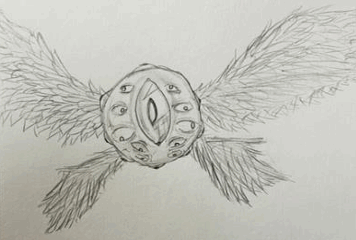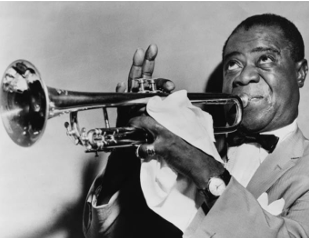Immigration
Good morning,
Over the next few Sundays we are going to turn our attention to a variety of topics around immigration. Shelly’s brother Paul Neufeld Weaver, who has been active in this world for much of his career will speak to us on May the 12th, and John Powell will speak next week. Amy Schniedhorst, who photographed today’s bulletin cover will lead 1st hour on the 12th reporting on her trip to the border with Metta Peace Team.
This focus is occasioned by a gift that we made recently to the Chapel Hill Mennonite Fellowship. When I talked about active peacemaking a few months ago I just the example of Isaac Villegas, pastor of the Chapel Hill congregation who actively resisted the deportation of Samuel Oliver-Bruno who had been in Sanctuary in Chapel Hill, but was deported through a trick of collusion between Immigration and Customs Enforcement and the Citizenship and Immigration Service. Chapel Hill also hosts, along with the congregation whose worship space they share, a woman named Rosa del Carmen Ortez-Cruz. She has been living in a hastily converted office space for more than a year. She left Honduras after her ex-partner nearly killed her. Offering sanctuary for that long is expensive and Chapel Hill reached out recently through the Central District Conference of the Mennonite Church and requested any assistance other congregations might provide. We gave $1000 which was very welcome and graciously received. Mohammed Soumah is in sanctuary here in Ann Arbor at the Friends Meeting House. On a number of recently Fridays Hillary has driven him to dialysis, which the hope that were he to be stopped between the church and the hospital, both places where his sanctuary wouldn’t be violated, her ordination might be effective. Our city council voted 10-0 last November to encourage all offices in the region to respect his Sanctuary status. In addition to these Sanctuary connections Michelle Webster-Hein has been coordinating support for refugees settling in our area through Samaritas Adopt a Family program.
These are some of the ways that we have been expressing solidarity with the people caught up in immigration. In attending to this topic over the next few weeks we might wonder what some others might be. There is one thing that stands out to me right from the start.
I had an encounter a couple of years ago with Drew Hart at the annual meeting of the Central District Conference in Bluffton, Ohio. Drew is the author of Trouble I’ve Seen, a book targeted at the Mennonite church and aimed to teach us about racism. It’s a good book and I liked much of its approach, but it’s also good at being palatable so I never really had an encounter with the book. When I say that I had an encounter with Drew I mean that when he talked he said two things that have deeply impacted me, and that I’ve been living with, every day since he said them. Some of you might have heard me say these things before; that’s the drag about being around someone who has had an encounter. They tend to talk about it.
The more interesting of the two things was when he said that Mennonites were well positioned to resist whiteness. We were not assimilated to any of the dominant cultures in the USA, had a history of persecution, supported abolition generally and at points powerfully. We might have been able, as a group, to seek modes of engaging the world around us focused on resisting the structures of privilege that drive whiteness. But we failed, growing our wealth through on stolen land, becoming English, seeking power.
The more powerful of the two things was when he was asked, clumsily, what we could do to address our legacy of racism. He backed around from the question in a number of ways and finally said, “You know, when I look out on a group of white people that don’t know what to do, and they are able to admit it and look to me, or people that look like me, for help, I think we might be able to get started with this work”
I mention this story because it has become a way that I try to think, and it’s been guiding me more than usual as I’ve prepared this sermon. I wonder if there are ways again as a community that we might be poised to resist whiteness. I wonder if immigration might be one of these spaces.
It would not be overstating things to say that the Bible is a book about immigration. Adam and Eve, not longer welcome in the Garden, immigrate to a land that end us being less hospitable. Cain murders his brother and settles in the land of Nod, east of Eden. When the world resets at Noah the Ark wanders across the face of the earth. It is perhaps the paradigmatic attempt to survive in a boat in unlikely circumstances. Abraham’s father Terah is a migrant, Abraham’s nephew Lot was an immigrant who settled in Sodom, and then had to flee Sodom. Lot ended up living in a cave with his daughters. Abraham is a migrant, all of Abraham’s children are migrants, from Hagar’s son Ishmael, cast out by his father’s wife, or Joseph cast out by his brothers or those same brothers saved by Joseph. Esau is tricked by his brother and immigrates to Seir founding the nation of Edom. Immigration because of famine is a big theme. People are forced to do things as immigrants that they wouldn’t otherwise find themselves doing. Abraham twice passes his wife off as his sister on the excuse that it will go better for him. Rachel steals her father’s household gods.
All of this is at the beginning of the story but the biblical story becomes only more and more focused on immigration. Liberation theology teaches us in the voice of Gustavo Gutierriez that the Exodus, that story of liberation from oppression, is the true main theme, rather than creation and redemption, or salvation and covenant. The people of God experience two major exiles one to Babylonia and one to Assyria. When then they return to the promised land it is again as immigrants. And the topic is by no means limited to the Hebrew Bible. Jesus lives as an immigrant as a child, forced away from Bethlehem by Herod. Paul journeys spreading the gospel. And this history of immigration is enlivened at every turn by the strong ethical command to care for the widow, the orphan, the alien among you.
Immigration is a consistent context for understanding the stories that come to us through the bible. It shows us characters at the worst that life will throw at them, and
sometimes at their worst, finding a way to survive, finding God’s favor, finding new hope for their lives. They are not always positive stories about good characters.
This is one of the things that makes the story of Ruth stand out. It is a story of multiple immigrations which fold back on top of themselves but with a cast of characters, all of whom are good. Robert Alter calls it one of the very few interesting stories entirely populated by good people. Naomi has left her homeland because of a famine but now years later without a husband, or sons, but with two Moabite daughters in law she is ready to return home, having lost everything, and again needing to find food. Orpah is a good person and does everything Naomi asks of her. Her sister in law Ruth is also a good person and finding herself deeply loyal to Naomi chooses to leave her homeland and to follow Ruth back to Judah. Naomi’s immigration from Judah to Moab and her return with Ruth from Moab to Judah are both driven by desperation. We can hear it in Naomi’s tone, full of bitterness, but we can also recognized in the larger geo-political context of the story. Moab was a perennial enemy to Israel and would have had extremely negative connotations with an origin story back in the cave Lot shared with his daughters.
This Moab, this horrible foreign land, is also the place where Naomi and her husband were able to find food, and wives for their sons, and a place to live for many years. But none of this should explain why Ruth is willing to go with Naomi, or why Ruth the Moabite is accepted by Naomi’s relatives when they return.
This story was probably written quite late as the few remaining Israelites where immigrating back to Canaan after the Babylonian captivity. Those immigrants had very strict rules about not marrying non-Israelites. Some of us can recognize that logic even now in our own lives, having married people much like us, but others of us married people from very different places even different religions. It is likely the case the book of Ruth was written with purpose of resisting the idea that Israelites had to marry Israelites by telling the story of a very successful marriage between a Moabite woman named Ruth and her Mother-in-Law’s relative, and Israelite named Boaz. Boaz is also and entirely good person in this story.
Let us work together, like the author of the book of Ruth, to find ways to resist the oppression in our world with the stories of good people. Amen


0 Comments